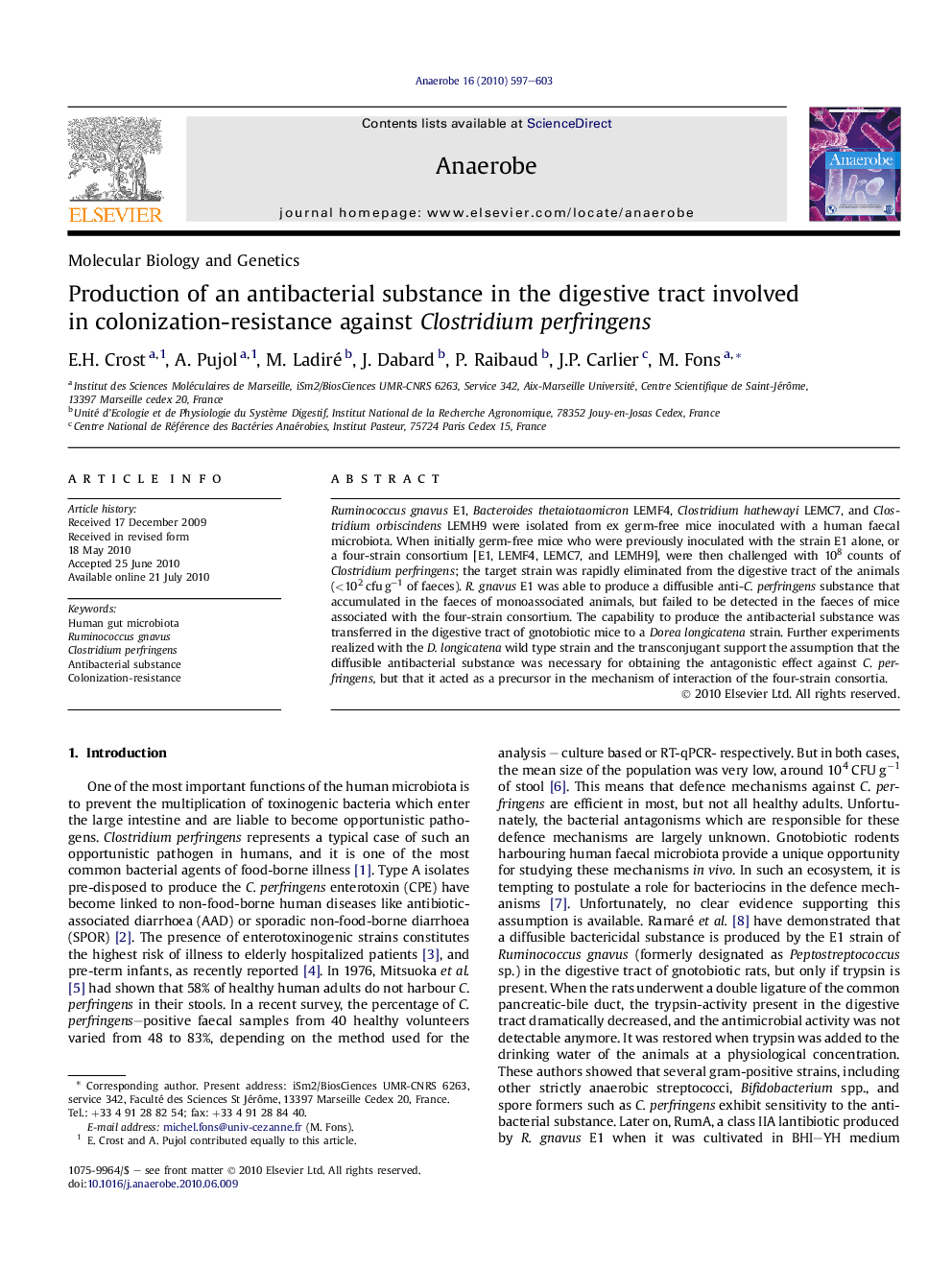| Article ID | Journal | Published Year | Pages | File Type |
|---|---|---|---|---|
| 3395620 | Anaerobe | 2010 | 7 Pages |
Ruminococcus gnavus E1, Bacteroides thetaiotaomicron LEMF4, Clostridium hathewayi LEMC7, and Clostridium orbiscindens LEMH9 were isolated from ex germ-free mice inoculated with a human faecal microbiota. When initially germ-free mice who were previously inoculated with the strain E1 alone, or a four-strain consortium [E1, LEMF4, LEMC7, and LEMH9], were then challenged with 108 counts of Clostridium perfringens; the target strain was rapidly eliminated from the digestive tract of the animals (<102 cfu g−1 of faeces). R. gnavus E1 was able to produce a diffusible anti-C. perfringens substance that accumulated in the faeces of monoassociated animals, but failed to be detected in the faeces of mice associated with the four-strain consortium. The capability to produce the antibacterial substance was transferred in the digestive tract of gnotobiotic mice to a Dorea longicatena strain. Further experiments realized with the D. longicatena wild type strain and the transconjugant support the assumption that the diffusible antibacterial substance was necessary for obtaining the antagonistic effect against C. perfringens, but that it acted as a precursor in the mechanism of interaction of the four-strain consortia.
